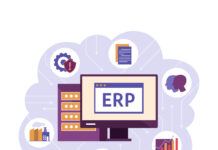Space management software is designed to assist and facilitate office space managers in efficiently handling the control and supervision of the real estate portfolio of the business.
A space management system is mainly seen as a branch of Integrated Workplace Management Software (IWMS). IWMS is a software that looks into improving the overall infrastructure, maintenance, space planning, and usage of facilities in the workspace. Space Management systems in general focus on the existing space layout and the resources that are incorporated into the office space. Space management software is specifically used as a tool for effective supervision and management of the workspace.
You might be wondering about the pros and cons of running through valuable company resources on space management software. But there are some extraordinary benefits to using one. With the trending hybrid work culture on the rise, many organizations are already noticing that their workspace is no longer optimized for the modern way of using it. Workspace design needs to change to reflect this shift in work culture, representing a real opportunity for considerable cost savings. Space Management software is the best tool at hand to manage these shifting changes without excessive workload.
As with any enterprise application, space management software should make your job easier. Easy-to-use space management software must offer workspace managers the tools and resources that make coordinating workspaces a simple affair.
LET’S HAVE A LOOK AT SIMPLE AND SEAMLESS FEATURES TO LOOK FOR IN SPACE MANAGEMENT SOFTWARE.
- Employee tools for a hassle-free booking
Workplace space management is made to make employee’s lives easier. It is estimated that employees spend more than 15 minutes a day in finding optimal and available office resources like meeting rooms, work desks, and parking spaces, and not being able to find these resources can be of great frustration, especially for larger organizations. By adopting employee-centered space management software, facility managers can make sure that employees have access to the tools they require to find and book resources while simultaneously acquiring effective ways to manage the overall workspace.
- Sensor Technology
Using sensor technology is often considered the most proven and effective tool to collect accurate data regarding the usage of office space. For instance, a work desk sensor detects the presence of a person and gathers data each time someone uses the resource, even if the employee uses it without any bookings or just for a short period. This can help facility managers understand how resources at the workplace are used at a deep level.
- Workspace floorplan overview
The key feature of your space management software should always be a clear floor plan overview. This can be done either by using existing floor plans, but we all know that this can be quite an ineffective way of managing office space. Space management software takes static floor plans and transforms them into interactive digital 3D maps of the workspace, making space management much easier..
- Robust Software
The larger the organization, the more complex the software ecosystem. Space planning software should seamlessly connect with day-to-day applications such as calendars, messaging applications, and specialty work software. The more cooperative the software is, the simpler it is to coordinate vital work facility functions.
- Workspace Software Analytics
When optimizing the workspace, it is important to understand how it is being used by employees and what a general workflow in a day looks like. It is crucial to make sure to evaluate the type of information we get from the systems analytics portal, such as; does it allow custom views. All of this information is of much importance to completely understand why and how the employees use the resources at the workspace.
- Real time viewing
Real-time views and activities within a workspace management software help coordinate agile facilities and their prompt needs. It is the key to opening flexible workspaces, managing office operations, and keeping up with the maintenance of the general facilities. Real-time views of a workspace keep pace with the speed of businesses and organizations—something that spreadsheets and computer-aided designs fail to do.
Not every workspace management software will include all of these features. There are softwares that do stand apart by offering unparalleled ease-of-use and intuitive functions to workspace facility managers. The more features in the system, the easier the management software is to use and the more benefits it can deliver to the workplace as a whole.













